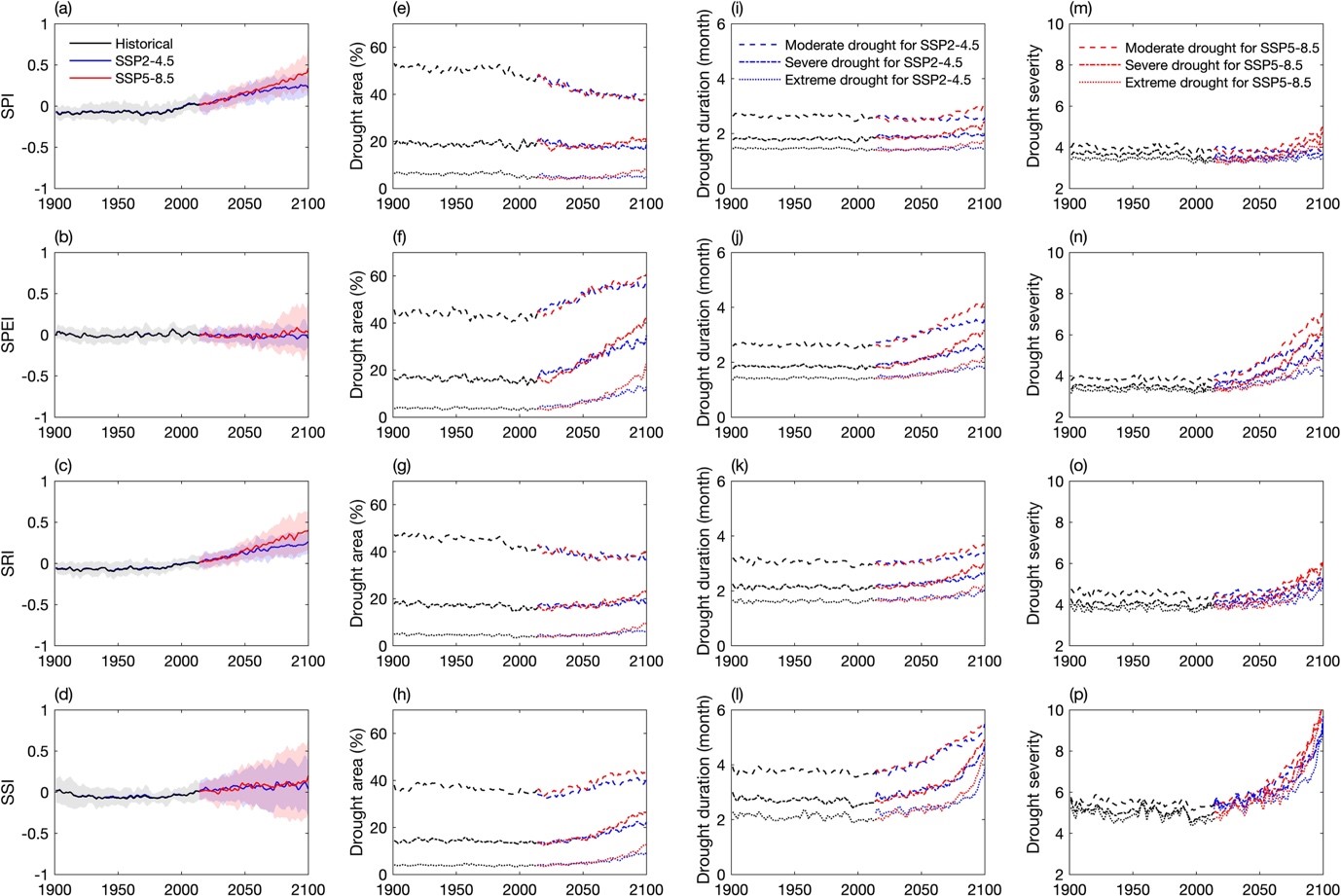Global warming increases the likelihood for more extreme hydrometeorological events to occur, leading to substantial impacts on ecosystems and humans. In this context, quantifying the changes and propagation of drought is of great importance for regional eco-environmental safety and water-related disaster management under a changing climate.
Prof. Zhang Shulei from the School of Atmospheric Sciences, Sun Yat-Sen University, examined future meteorological drought (i.e., a precipitation deficit and climatic water demand deficit, with climatic water demand representing the difference between precipitation and potential evapotranspiration), hydrological drought (i.e., a runoff deficit), and agricultural drought (i.e., a soil moisture deficit), under two warming scenarios, and explored the drought propagation patterns based on the newly released CMIP6 data. The research is published in Atmospheric and Oceanic Science Letters.
"Different types of drought events generally exhibit a larger spatial extent, longer duration and greater severity from 1901 to 2100, but the conclusion also depends on the regions and drought metrics being considered”, says Prof. Zhang.
In the study, Zhang found that regions such as the southwestern United States, Amazon Basin, Mediterranean, southern Africa, southeastern Asia, and Australia would experience intensified drought. Hydrological and agricultural droughts are expected to intensify more than precipitation drought, with the deficit in climatic water demand experiencing the greatest increase.
It is also indicated that meteorological drought shows a higher correlation with hydrological drought than with agricultural drought, especially in warm and humid regions. Additionally, the maximum correlation between meteorological and hydrological drought tends to be achieved at a short time scale.
These findings have important implications for drought monitoring and policy interventions for water resource management under a changing climate.

Figure. Time series of the global average meteorological (SPI and SPEI), hydrological (SRI) and agricultural (SSI) drought conditions during 1901–2100 under the historical, SSP2-4.5 and SSP5-8.5 scenarios.
Citation: Jianxin Zeng, Jiaxian Li, Xingjie Lu, Zhongwang Wei, Wei Shangguan, Shupeng Zhang, Yongjiu Dai, Shulei Zhang, 2021, Assessment of global meteorological, hydrological and agricultural drought under future warming based on CMIP6, Atmospheric and Oceanic Science Letters, 100143, https://doi.org/10.1016/j.aosl.2021.100143
|